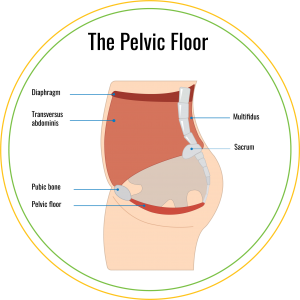21 Nov WOMEN’S HEALTH – The pelvic floor and incontinence
A few weeks ago, Nikki presented some great info on the basics of incontinence, and this week we are jumping into some more of the technical things!
Even though your pelvic floor has many functions, some significant ones are continence, organ support and respiration. Because, of this, if you have a weak/damaged pelvic floor, you may be more likely to experience incontinence. Like other muscles, the pelvic floor muscles become stronger with a regular exercise program and guess what?! Pelvic floor muscle exercises are important for both men and women!

Pelvic floor muscles can be made weaker by:
- not keeping them active;
- being pregnant and having babies;
- constipation;
- being overweight;
- heavy lifting;
- coughing that goes on for a long time
- (such as smoker’s cough, bronchitis or asthma); and
- growing older
- prostate surgery
So what/where are my pelvic floor muscles?
- Sit or lie down with the muscles of your thighs, buttocks and stomach relaxed.
- Squeeze the ring of muscle around the back passage as if you are trying to stop passing wind. Now relax this muscle. Squeeze and let go a couple of times until you are sure you have found the right muscles. Try not to squeeze your buttocks.
- When sitting on the toilet to empty your bladder, try to stop the stream of urine, then start it again. Do this to learn which muscles are the right ones to use – but only once a week. Your bladder may not empty the way it should if you stop and start your stream more often than that.
If you don’t feel a distinct “squeeze and lift” of your pelvic floor muscles, or if you can’t slow your stream of urine as talked about in Point 3, it may be time to seek some help!
There is a lot of information and myths out there about the pelvic floor but it is important to know that in many cases, progress can be made! Pelvic floor exercises are not always easy to do, as it can be quite difficult to actually identify your pelvic muscles but that doesn’t meant that you can’t/shouldn’t do them. Although pelvic floor muscle exercises can be learned from a pamphlet by some people, research shows that up to 50% of women trying to do pelvic floor muscle exercises from a pamphlet get the technique wrong – which can be extremely frustrating!
Like all exercises, pelvic floor exercises are most effective when individually tailored and monitored to you! Doctors, physios and continence nurses should all be able to help, but it is important to see someone you are comfortable with and who can explain things well!
